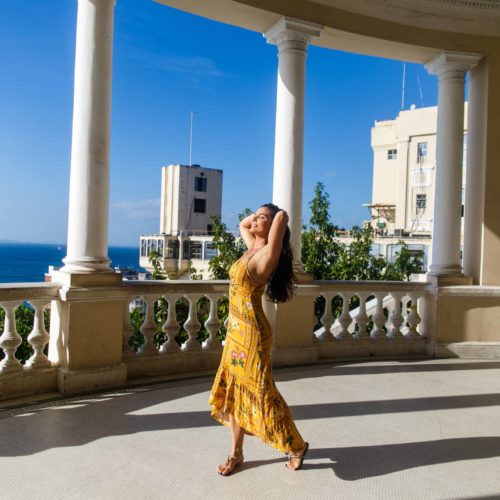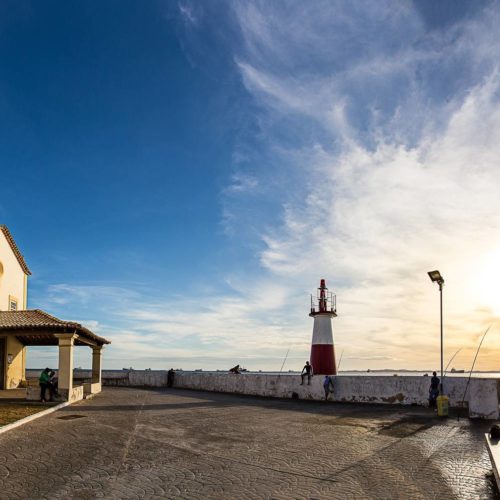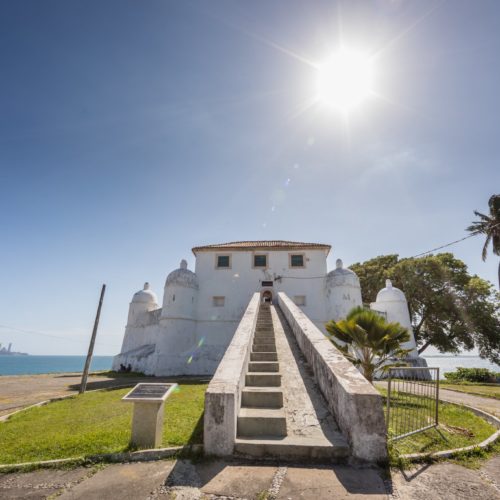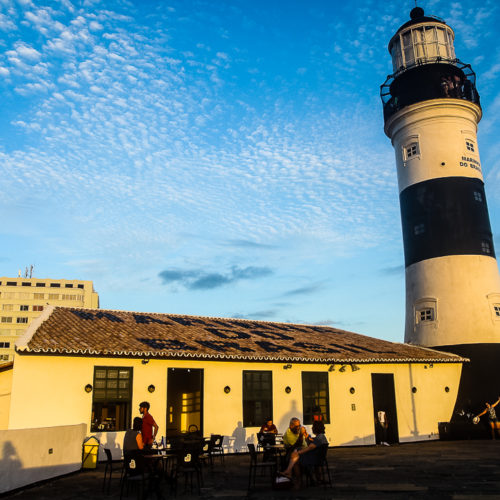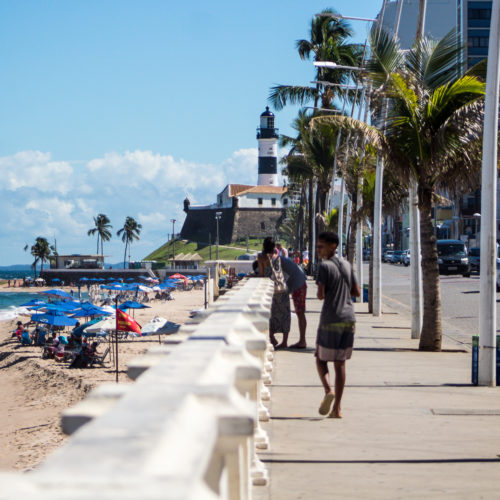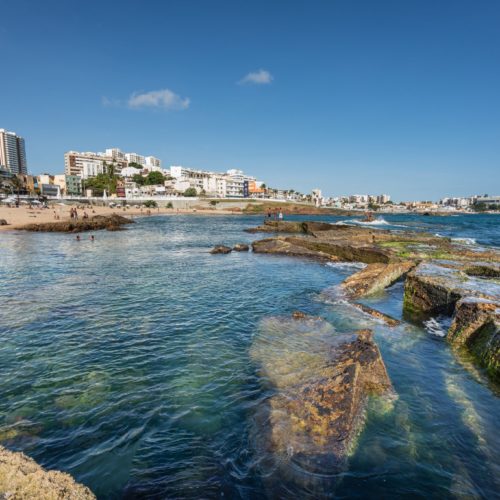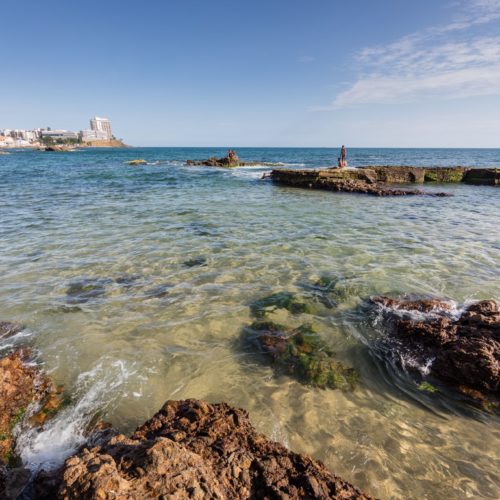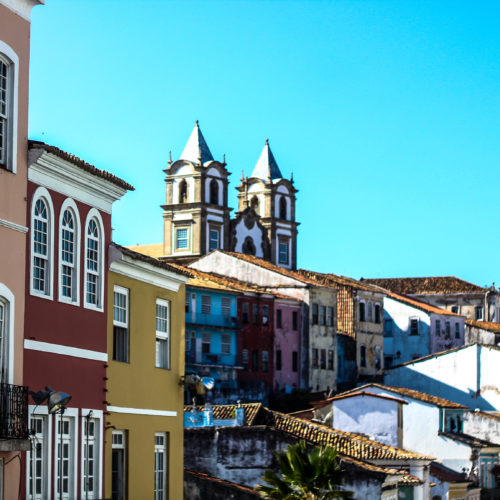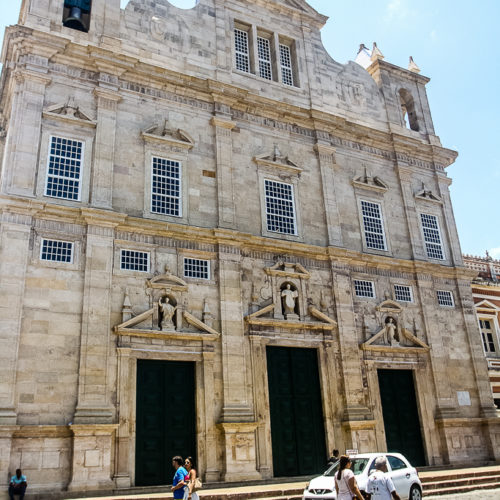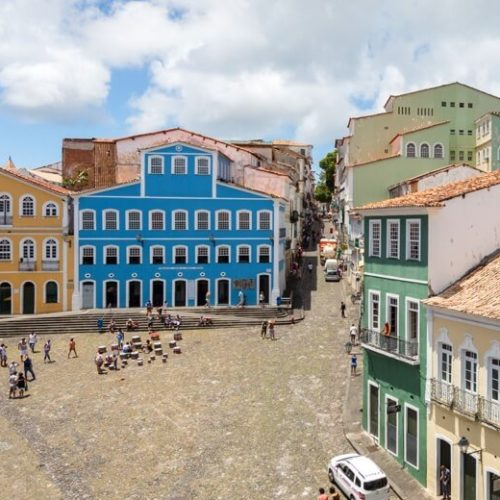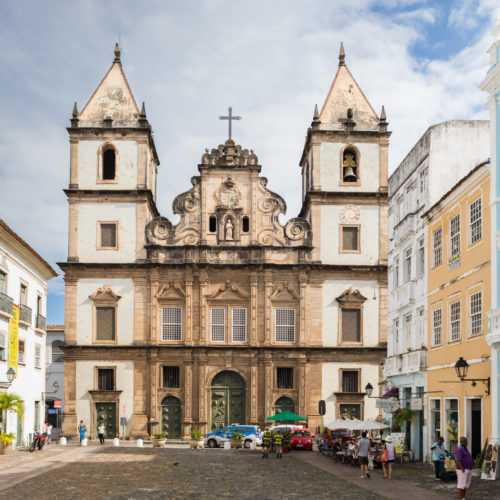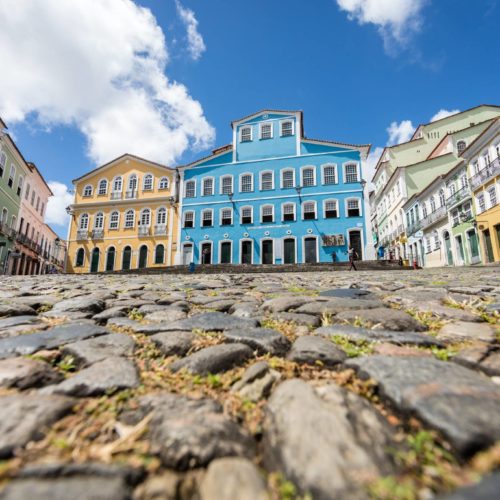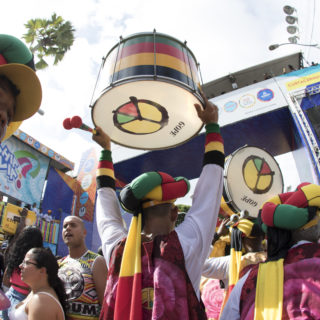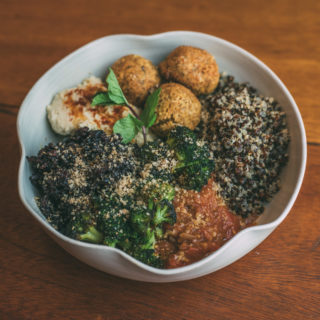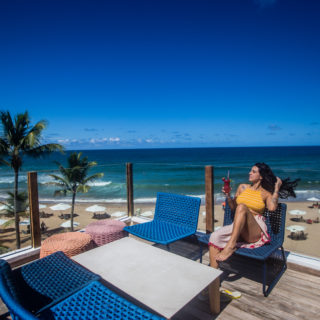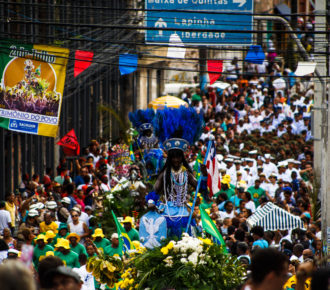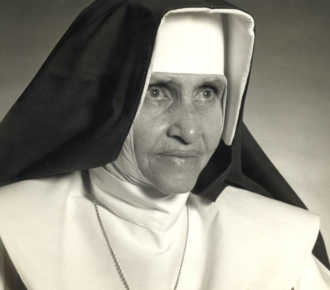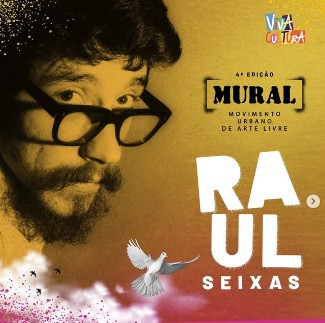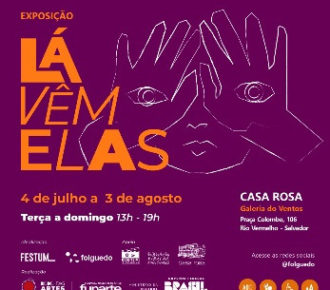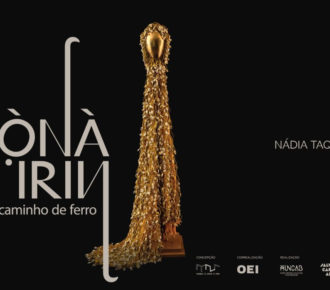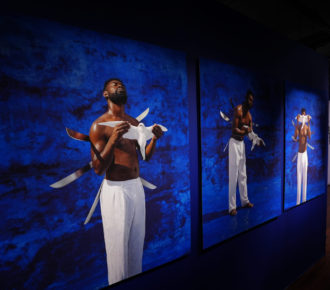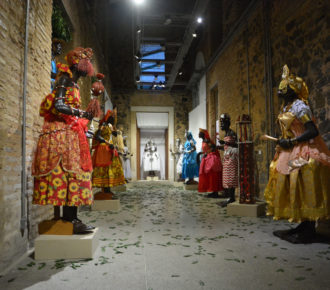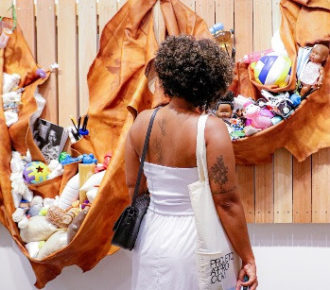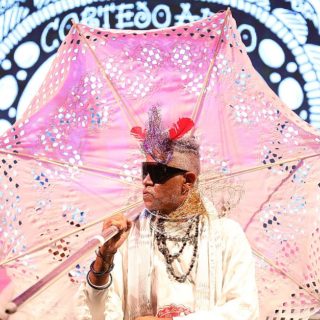
A musical itinerary for you to walk around the city even though you are at home
The watchword is to stay at home. But, what to do with this desire to see life happening on the street? Thinking about it, we have invented a visual and poetic way to take you to stroll through Salvador without leaving the comfort – and safety – of your residence. Here are 10 songs that go around the city, either in images or by the lyrics of each one. Let’s go?
Clara Nunes – Filhos de Gandhy
Clara Nunes was the first Brazilian singer to sell more than 100 thousand copies, overturning a taboo that “women didn’t sell records”. Brazilian singer and songwriter, researcher of popular music, folklore, the African dances and traditions.
Considered one of the greatest singers in the country, she opens our list, taking us through: the streets of the Comércio neighborhood; the Mont Serrat Fort, in Lower City; Itapuã beach and Itapuã Lighthouse. Filhos de Gandhy appear in front of the Jorge Amado Foundation, in Pelourinho and Lagoa do Abaeté.
https://www.salvadordabahia.com/experiencias/afoxe-filhos-de-gandhy-2/
Silva – Brisa
This clip will take you to places you’ve probably never been to – and at least two that you don’t even know where they are. Our suggestion is to watch the clip first and then come back to this text. The game is to try to guess the places without reading this whole text beforehand. So, go… then come back here.
I hope you have accepted the challenge. Now let’s see if you got it right. In the first scene, the boat strolls through All Saints Bay, showing the continent from the sea. Then, people appear jumping from Porto da Barra trampoline, and there are scenes at Farol da Barra beach. The gentleman who appears and adds the tambourine swing is Mestre Paulinho, dear musician who performs at the vibrant nights of ABOCA Centro de Artes (ABOCA Arts Center), one of the most unusual nights in Salvador.
So far it was easy, until, just after the scene of the Baianas in front of Casa do Olodum, the singer Silva appears in a ruined building. This is Cine Jandaia, in Baixa dos Sapateiros – yes, it is in Salvador! Tell us, did you guess it right?
After that, we have a tour of the Farol da Barra Fort, at the Nautical Museum and we walk through the patio, where there is the Farol Café Wine bar. This one you can put on the list of things you still want to do: you can climb the Farol da Barra tower, one of Salvador main postcards, which is also a symbol of Bahian carnival. Silva also appears practically hugging a century-old jewel: the lighthouse lens. Wow! So… did you find this scene?
In the end, after a walk through the Historic Center, with scenes on the doors of the Church of São Francisco and the Basilica Cathedral, he also appears in the Rio Branco Palace. Silva still managed to see the São Marcelo Fort from a boat and the Ponta do Humaitá lighthouse. Phew, this one knew how to stroll!
Nikima – Quebra Queixo
You probably know Nikima since 1999, with his band Lampirônicos. Then he launched the project “Nikima e seu Tabuleiro de Mídia” (Nikima and his Media Board) inspired by Jamaican Sounds Systems. In 2006, he took over the vocals of the Scambo band, winner of 6 categories of the 2005 Trofeú Caymmi award, to record the album “Qual o Seu Tempo?”.
For you who are getting to know his work at this moment, know that he has already performed alongside great names in music such as The Wailers, Alceu Valença, Carlinhos Brown, Arto Lindsay and Nação Zumbi. Nikima has just released this brand new work. In this video clip, you can enjoy a visual and sound journey.
Wearing a curious “quebra-queixo” outfit – a coconut-based sweet – Nikima takes you through the streets of the Comércio neighborhood. The main scenes are on the street that leads to the Gonçalves Inclined Plane, one of the connections between Lower City and Upper City, leaving you right next to Casa do Carnaval, in Pelourinho – that doesn’t appear in the clip, but it’s always good to know (lol). In the convertible car scene, you can see Avenida França, Avenida Contorno and All Saints Bay. Are you curious to know what else there is in this neighborhood? Then click on this link.
Drik Barbosa – Tentação feat. ÀTTØØXXÁ
The combination of Drik Barbosa and ÀTTØØXXÁ could only be something good. So, get up off the couch and dance watching the clip.
The film passes by the train station that connects the Calçada neighborhood, in the Lower City, to the railway suburb. Drik still walks around the Solar do Unhão Community and the pebble beach of Unhão.
Speaking of Subúrbio, take a look at this tip (to write it down and enjoy it when the quarantine period ends). You will love it!
Mateus Aleluia – Bahia… Bate o tambor!
Seu Mateus, as he is known here in Salvador, is a living legend, an entity, as most of his fans say. Brazilian singer and songwriter, he is reminiscent of the original formation of the musical group Os Tincoãs, and has a voice timbre that seems to talk to our soul.
In “Bahia … Bate o Tambor!”, the church bells being used as instruments in the music indicate how profound this composition is. Let this great artist take you through the city that beats the drum… close your eyes and have a nice walk.
Psirico – Tá Quente
This song was a big hit in the carnival 2020. We might agree that they managed to put in this film the rhythm, the energy, the colors and the movements that this hit deserved.
Most of the clip happens in one of the widest corridors of Feira de São Joaquim and a very busy one because it gives access to restaurants overlooking the All Saints Bay. And as the fair is the main stage, what do you think about knowing more about this place? Click on this link.
The clip also shows paradisiacal beaches in Salvador (tell us which ones they are because we didn’t find out! Lol), as well as images of the Historic Center streets, Largo do Cruzeiro de São Francisco, the Solar do Unhão Community, Largo do Santo Antônio, Largo do Pelourinho, with the Jorge Amado Foundation in the background, Largo do Terreiro de Jesus, with the Basilica Cathedral of Salvador and even people jumping in the luminous water fountain of Praça da Sé. All of this without mentioning the crowd that keeps dancing non-stop. We doubt you reach the end of the song without trying a single move!
Saulo – Bahia Mãe
From a clip that already opens with the image of Negra Jhô you can expect a beautiful story… (https://www.salvadordabahia.com/experiencias/negra-jho/). And she appears doing her art: transforming women into goddesses with head scarves, hairstyles and dance.
Saulo, with his delicacy, made this clip a magnificent bow to the great women of this land, managing to gather important representatives. Here, in this itinerary, this song was chosen because, in addition to showing the city, it shows the importance of our people.
And the Lagoa do Abaeté queens, the Ganhadeiras de Itapuã could not be missing. Interesting fact is that Viradouro, which was the big winner of the Rio de Janeiro carnival samba school parades in 2020, had the plot ‘Viradouro de alma lavada’, a tribute to the Ganhadeiras de Itapuã.
Learn more about them at this link.
In the film, a capoeira circle opens on the deck of Rio Vermelho, where only women participate. Soon after, Dadá’s smile appears on the scene, known for her delicacies and her unmistakable laugh.
Denny Denan – Turbina
One of the city symbols, the coffee cart, appears in the first scene. And the classics continue to appear, with the natural pools of Farol da Barra, which are formed at low tide; Porto da Barra; the jogging along Barra seafront until Cristo; the streets of Pelourinho and the great Negra Jhô. After the scenes at an airport, the tour ends at a big party at Praça das Artes, in Pelourinho. Have you ever been to a show there? It’s awesome!
Tropkillaz, J. Balvin, Anitta – Bola Rebola ft. MC Zaac
Those who didn’t know Solar do Unhão Community and Gamboa de Baixo, felt like getting to know them because of this woman. In 2019, Anitta rocked the phonographic structures with a clip filmed through the graffiti alleys of this place with a privileged view of All Saints Bay.
The first scene in which Anitta appears is where A Novidade bar is today. In addition to scenes inside the community and on the pebble beach, there are participations by local artists such as Compadre Washington and Léo Kret. The film ends at a big party on Bar da Mônica slab.
Cascadura – Soteropolitana
The film begins within the Pierre Verger Foundation with Dona Cici delivering a Rolleiflex camera to the protagonist. This is the same camera model that the great Pierre Fatumbi Verger (1902-1996) used. He, who was a French photographer, ethnologist, anthropologist and researcher, lived a large part of his life here, in the city of Salvador.
Dona Cici, who was close to Verger, dedicates her time to passing on Afro-Brazilian ancestral wisdom to this day. She knows a lot about the culture of the orixás and our history.
The great introduction was necessary for you to understand the poetry behind the scenes in this clip. The lyrics tell in an almost didactic way how this city was formed and what it has become today. In the images, the character goes through places that are not touristic, but are well known by the vast majority of Soteropolitans. He photographs everyday life, just as Verger did in his days. Very interesting.
[oxe!] FARM campaign
With music as a starting point, the high summer 2020 campaign of the Rio de Janeiro brand FARM connected with the city, experimenting many visual languages, bringing together several Bahias.
With direction by Carlos Mach and direction assistance signed by Sirc Heart, a visual artist from Bahia, the campaign brought a team of artists, also from Bahia, among dancers and models, occupying symbolic spaces in the city of Salvador. Vera Passos, choreographer and professor at the Cultural Foundation of the State of Bahia, signed the choreography.
The images take you to Paciência Beach; Parque das Dunas, where the dancers are led by Veko Araújo (Cortejo Afro); São Joaquim Fair; Pelourinho; Subúrbio Beaches; and Ilha de Maré. The Bahian singer, Larissa Luz, is the one who sings the theme song full of very local elements such as the expressions “de keké” and “calundu”; typical seriguela and umbu fruits; the classic Capelinha popsicle and “Passarinha” dish.
Learn more about this collection at this link

